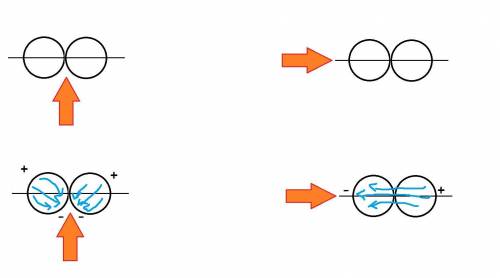Let's assume the metal spheres are solid metal, and not charged beforehand.
The premise are similar, but the effect changes depending if you are approching from the side, between the spheres (left image) or the front (right image). Let's image the charged object is the tip of the arrow in the drawing, and it's small enough to be considered a point
In either case, the electron cloud in the spheres will be affected by the electric field generated by the charge, and gets attracted towards it (since the charge is positive and the electrons have by definition negative charge), moving according to the blue lines. For as long as the charge is in place, the "grouping" of charges on one side and the absence of charges on the other will create an electric dipole with the positive charge away from the side the arrived and the negative on the opposite end of the diameter.
The interesting part happens the moment you split the two spheres.
In the left case will realign based on the field lines (remember that a single charge will generate a radial field) and the moment you remove the charge the electrons are no longer drawn to one end, and will eventually re-distribute on the whole sphere, canceling the dipole.
In the right case instead, the fact that the spheres were touching allows the electrons in one of the sphere to migrate to the other, generating a net positive charge in the far sphere, and a net negative charge in the close one. if you separate the two spheres before removing the charge, the electrons are still "trapped" in the leftmost sphere, thus keeping it charged even after the original source is removed from the system.
